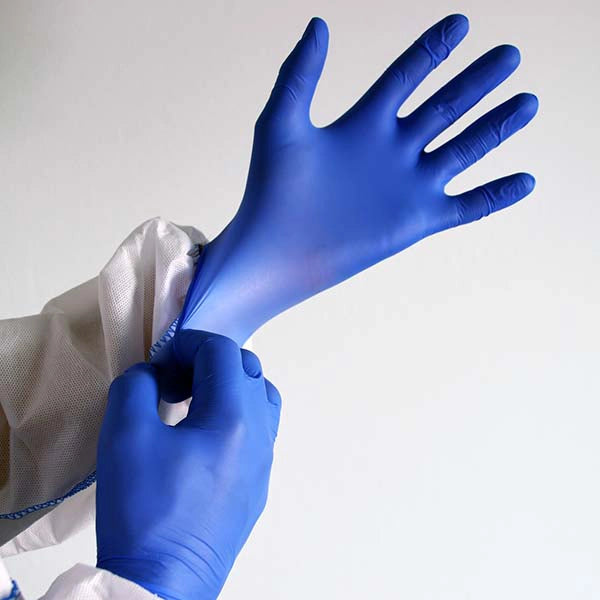Hand protection is an important facet of many different careers. From the medical and scientific professions to construction, manufacturing, fabrication, and beyond, if you’re in a field of work that involves protecting your hands from all different types of hazards, you need to be wearing appropriate gloves.
For the most part, the onus is on an employer to ensure that their employees have access to the best types of gloves for the task. There are, of course, several different types of gloves, as they can range from chemical resistant, cut resistant, sterile, anti-vibration, and many other categories as well. Yet no matter what type of glove is appropriate, unless these gloves fit employees’ hands properly they won’t provide the right levels of protection needed. This is, of course, why many employers endeavor to keep a number of differently-sized gloves in stock to account for the fact that no two people have hands of the same exact size and shape.
Why Glove Sizing Needs to Be Done Properly
While it may seem like common sense when it comes to ensuring you’re wearing gloves of the proper size, it does bear pointing out exactly what the dangers are when it comes to incorrect glove sizing. First and foremost, trying to wear gloves that are either too small for your hands or too large for them can result in making it difficult to complete necessary tasks while wearing them. More importantly, though, you could end up injuring your hands as well.
Gloves that are too small are simply uncomfortable to wear, as they can compromise dexterity and cause hand fatigue. Rips or tears to the glove itself become more common if the material of the glove is being stretched beyond its capabilities, exposing you to hazards. Meanwhile, gloves that are too big for your hands can be caught on tools, machinery, or any other hazards, resulting in either the glove being pulled off completely or causing your hand to become lodged in an unsafe and dangerous place.
Glove Size Measure Techniques
It’s obvious that you need to ensure you’re wearing the right glove size. But how do you get a properly fitting glove? The key here is that you need to understand how to measure your hand properly so that you can then translate that measurement into the right glove size.
There’s more than one method for determining the right size. One of these methods is conducted by measuring how wide your dominant hand is. This involves the use of a soft cloth tape measure. You should always use your dominant hand, as it tends to be slightly larger than your other hand; make sure you measure your right hand if you’re right-handed (and left vice versa). Simply place the measuring tape in the palm of your hand right where your first and second fingers meet and wrap it horizontally around, making sure to leave your thumb out of the measurement. Record your hand width in both inches and millimeters if possible, as some sizes may be listed in one measurement instead of the other.
Figuring Out Non-Standard Glove Sizes
Many gloves come in sizes measured in either millimeters or inches, but some come in non-standard sizes. In the United States it’s common to see gloves offered in relative sizes, ranging from Small (or Extra Small) to XL or even XXL. Meanwhile, many European-based manufacturers will use numbered sizes, often starting at 6 at their smallest size and going as high as 11. This can make sizing safety gloves challenging. However, in most cases you can equate the measurements you took along the following lines:
For US sizes, XS typically begins at 6-7 inches or 152-178 millimeters. Each subsequent glove size goes up by around an inch or 25 millimeters or so, with Small glove fitting for people with hand sizes of 7-8 inches or 178-203 millimeters, Medium for 8-9 inches or 203-229 millimeters, and so on. Meanwhile, European sizes 6 through 11 are roughly equivalent to XS through XXL.
Identifying The Right Size Glove by Hand Length
In addition to hand width, there are other ways to measure the right size glove for you. Many gloves are offered in not just different hand width sizes but also offered in different hand lengths as well, and this means it’s just as important to determine your own hand length as well so you can more easily choose a glove size by these measurements as well.
There are two different aspects when it comes to glove length. First, the one where you can measure involves taking your cloth measuring tape and measure from the tip of your middle finger (which is almost always your longest figure) to the base of your hand where it meets your wrist. This will give you the measurement needed to determine your glove size if measured by hand length.
However, there is a second aspect of glove length as well that doesn’t involve hand length. While types of safety gloves typically stop at the wrist, others may be much longer depending on how much protection is needed. It’s typical for a glove size to also include how far up the forearm the glove fits. Gloves used for cleaning with caustic chemicals can be as long as 18 or even 24 inches to protect the forearms, while gloves meant for heavy industry might be even longer. Meanwhile, the typical disposable glove size for a doctor or nurse during a routine examination will usually measure no more than 9 to 12 inches long.




